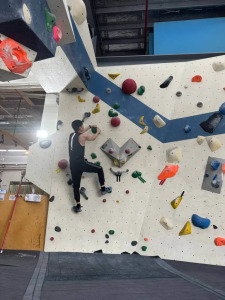Search engine optimization is one of the most valuable tools in a small business’s marketing toolkit. It helps grow organic brand awareness and traffic over time.
SEO involves optimizing your website’s content to align with search engines’ understanding of what users are looking for. This includes keywords, on-page optimization, and link building. Contact Rank Boss now!

Keywords are the words and phrases that searchers type into search engines to discover your website. They are essential to SEO because they help search engines understand what your content is about and match it to search queries. Choosing the right keywords requires a deep understanding of your audience and how they use search engines. It also involves determining which keywords are relevant to your business and how to effectively incorporate them into your content. In addition, it’s important to know whether or not synonyms count as keywords.
Keywords can be grouped into four different types: informational, navigational, commercial, and transactional. The best way to determine the type of keyword is to study the behavior of your target audience and analyze their search intent. This will allow you to create a keyword strategy that meets their needs and drives targeted traffic.
It is important to have a primary keyword for each page of your site, but it is equally important to focus on the keywords that are most relevant to your business. This will improve your chances of ranking higher in the search engine results pages (SERPs) and attract qualified visitors to your website. In addition, it’s important to consider the search volume and competition when selecting your primary keyword.
Another factor to consider is the proximity of your keywords to each other. The closer your keywords are to each other, the more relevant your content will be to a specific search query. However, you should avoid keyword stuffing, which is the practice of placing multiple keywords within your content.
Lastly, it is important to identify and target long-tail keywords. These keywords are more specific and have lower search volumes but less competition. They are more relevant to the user’s intent and may be used in the early stages of the buyer journey. They can also be useful for niche businesses.
A good rule of thumb is to include at least one long-tail keyword for each page of your website. However, it’s important to remember that your content must be genuinely valuable to rank high in the SERPs. If your content is not relevant to the user’s query, it will not be seen as helpful and will likely result in a high bounce rate and low time on site.
On-page optimization
On-page optimization is the process of optimizing a web page’s content and code to improve its ranking in search engine results pages (SERPs). This can include using relevant keywords throughout the page, optimizing title tags and meta descriptions, and creating high-quality, relevant content. While on-page SEO is important, it’s not the only factor that influences a site’s rank.
Historically, on-page optimization focused on keywords and how many times they appeared in a page’s content. However, in recent years, the emphasis has shifted toward providing a good user experience and improving relevancy. Keywords still play an important role in SEO, but they should be used sparingly and thoughtfully.
The most important on-page SEO factors are the page’s title tag and meta description. These are displayed as the headline and summary of a search result in SERPs, respectively. They are the first impression that a search engine has of a page and can influence click-through rates. The title tag should contain the keyword that the page is optimized for, while the meta description should provide a brief overview of the content on the page.
Another important on-page SEO factor is the page’s URL structure. This should be as clean and descriptive as possible, while avoiding duplicate content and internal linking issues. This is especially important for ecommerce sites that utilize product catalogs and structured data.
Header tags are also a valuable on-page SEO tool, as they help search engines interpret the hierarchy of a page’s content. There are six header tags – H1 through to H6 – which can be used to create a logical, hierarchical structure for your page’s content.
Another on-page SEO practice is image optimization. This includes using alt text to describe images, which can help improve search engine rankings by indicating the relevance of the image. In addition, it is important to optimize images for speed and load time. This is particularly important because Google now factors website load time into its ranking algorithm. In addition, slow websites can have a negative impact on user experience.
Off-page optimization
In addition to onsite optimization, off-page SEO is an important part of your marketing strategy. It involves building authority and trust through backlinks, mentions, and social media engagement. It can be more challenging to measure than on-page optimization, but it’s just as crucial. This is because off-page factors can have a big impact on your search engine rankings. It’s also a good idea to use a range of tools to monitor your off-page performance.
Off-page SEO strategies include everything from guest blogging to content marketing and influencer outreach. They can boost your website’s ranking and improve its visibility on search engines. These tactics also help you build a trusted brand and generate organic search traffic. However, the effectiveness of off-page SEO tactics varies from one industry to another. It is crucial to develop a campaign-based approach to off-page SEO that resonates with your target audience and produces lasting results.
Creating high-quality content is an effective way to increase your website’s authority and boost its search engine ranking. You can also optimize your inbound link profile by publishing content on third-party platforms, such as blogs, infographics, and video channels. Publish content on sites with a reputable domain authority to gain valuable backlinks. To increase your site’s credibility, you can also ask satisfied customers to leave reviews on third-party sites such as Google Business Profile or Yelp.
The way search engines work is constantly evolving, and your SEO tactics must keep up. The days of link farms and paying for links are long gone, and search engines now take many different factors into consideration when determining your page ranking. Modern off-page SEO tactics should be based on thought leadership, authentic authority building, and digital PR campaigns.
On-page SEO is the process of optimizing your website’s content and HTML structure to rank higher in search engine results pages. It includes keyword research, title tags, and meta descriptions. Off-page SEO is a more complex process and relies on the authority of other websites to improve your rankings. Off-page SEO includes social media and local SEO, but it can be difficult to track. It also requires regular technical checks, including mobile-friendliness, safe browsing, and HTTPS security.
Link building
Link building is the process of acquiring links to your website. It can be a vital part of your SEO strategy. Search engines consider the number of quality inbound links to a webpage as one of the most important factors in determining its ranking. It is also important to have a diverse link profile, meaning that you have links from a variety of sources.
There are several different types of link building techniques, each with its own impact on your page’s ranking in Google. Some of these techniques include guest blogging, social media marketing, and creating resource pages. However, the best way to build links is by providing valuable content that people want to share. This will increase your visibility, and it will also help you attract more business.
The key to effective link building is to understand your audience and their needs. You can do this by understanding what type of content they find useful and which websites they visit. This will give you a list of potential links to reach out to. Then, create content that is useful for them and add it to your website. This will help you build your authority and improve your ranking in search engines.
Another important factor to keep in mind when building links is that different sites have varying link value. For example, a link from the New York Times will pass more link equity than a link from a small, niche blog. This is because the New York Times is a highly reputable site that has spent years building trust with consumers.
While it is important to use these strategies, it is also essential to avoid black hat tactics. Black hat methods are considered spammy and can hurt your ranking in search engines. These techniques involve generating a large amount of links from low-quality websites, which can have a negative effect on your search engine rankings.
Some common black hat methods include using tools to automate the generation of links and purchasing links on questionable websites. While these methods may produce some results, they are not sustainable and will not be effective in the long run.


